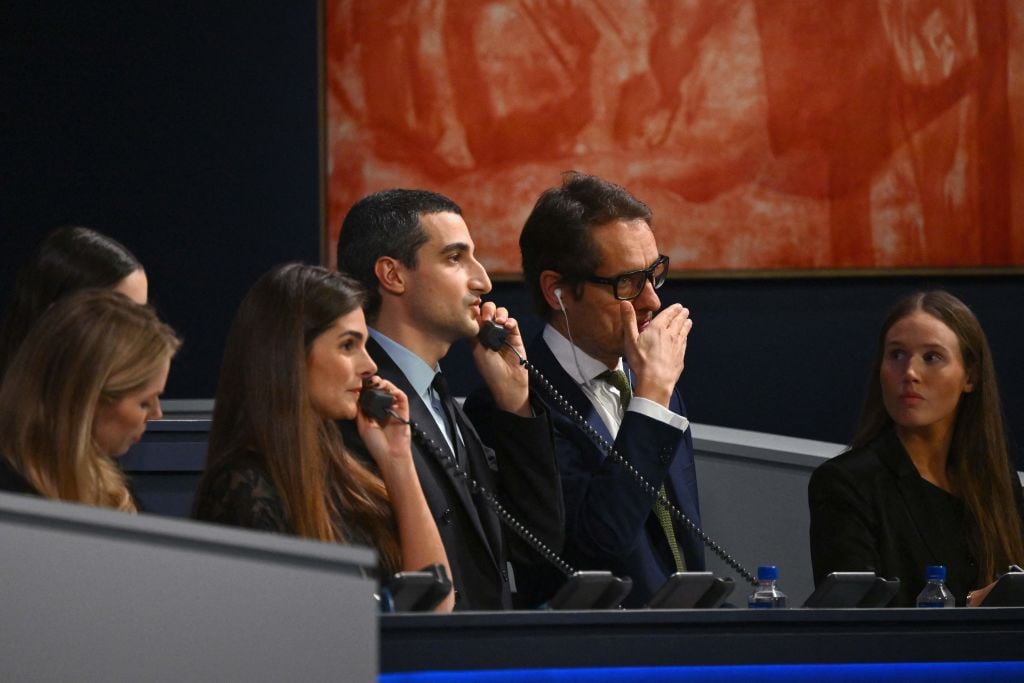At the top of the art market pyramid, 44 artworks fetched $10 million or more each during the two weeks of marquee sales at Christie’s, Sotheby’s, and Phillips. This elite group totaled $1.1 billion—accounting for a half of the season’s $2.2 billion tally. Just six female artists were part of the cohort, including two living ones: Julie Mehretu and Jenny Saville.
This was no small feat: Artnet Price Database lists 1,854 lots offered at the three auction houses in New York from November 6 to 17. The top lot of the season, Pablo Picasso’s Femme à la montre (1932), sold for $139.4 million. Saville ranked 41st and Mehretu 42nd, surpassing major artists whose works sold for less, including Willem de Kooning, Donald Judd, and David Hockney.
You go, girls! (In addition, Joan Mitchell’s paintings ranked 14th and 15th, Agnes Martin ranked 26th, Tamara de Lempicka 29th, and Barbara Hepworth 38th).
While personally I am always rooting for amazing female artists who’ve been undervalued for centuries, there was something else about these two works that intrigued me. They came up for sale within minutes of each other at “The Now” auction at Sotheby’s on November 15. I covered this sale for Artnet’s “By the Numbers” column, which required tracking down hammer prices and final prices as well as all kinds of other revealing yet geeky data.
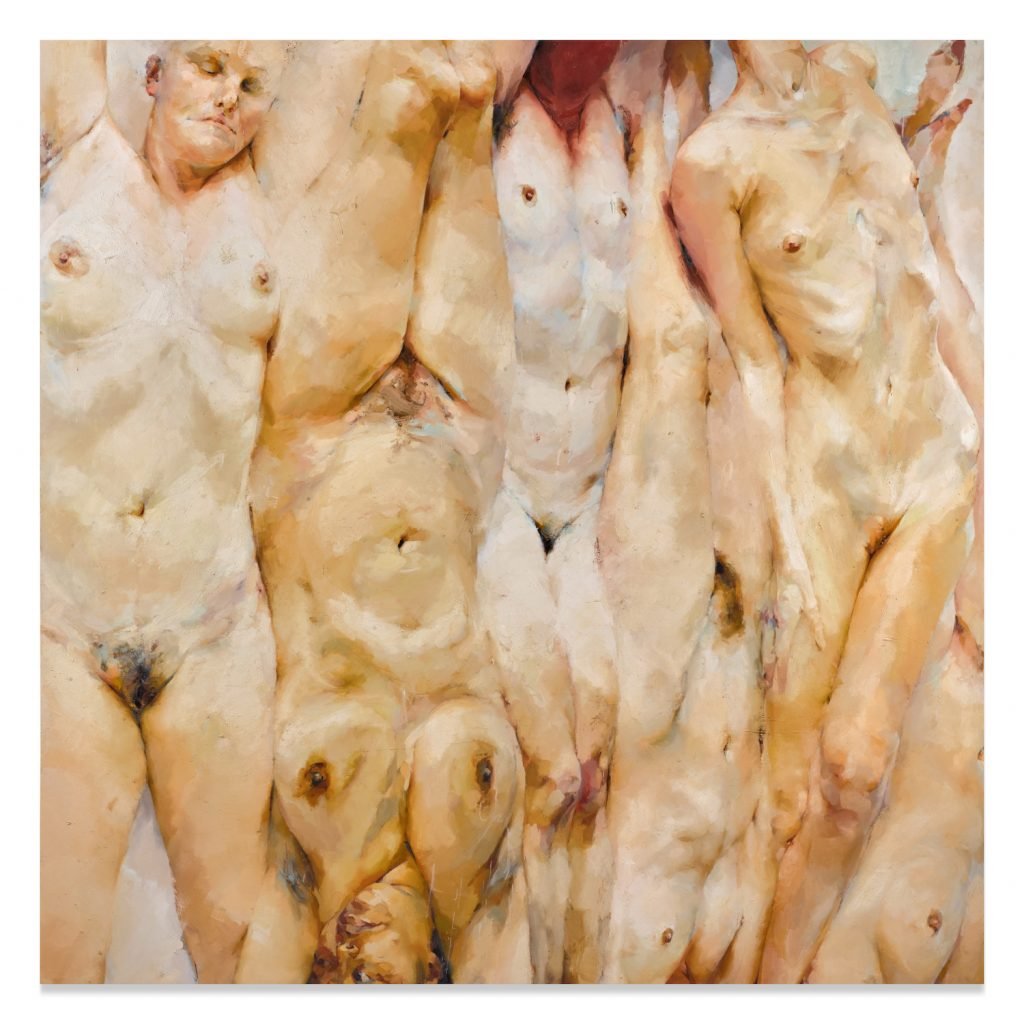
Jenny Saville, Shift (1996-97). Image courtesy Sotheby’s.
Saville’s massive Shift depicts six naked female bodies claustrophobically squashed together, right-side-up and upside-down. Measuring almost 11-feet-high and 11-feet-wide, the canvas is mesmerizing, at once glorious and revolting. The effect of its full-frontal nudity is disquieting and oddly dehumanizing.
It appeared in the Royal Academy of Art’s famous 1998 exhibition, “Sensation: Young British Artists from the Saatchi Collection,” which later traveled to the Brooklyn Museum of Art, igniting the ire of mayor Rudolph Giuliani.
In 2016, Shift came up for sale at another turbulent moment: the Brexit vote in London. Estimated at £1.5 million to £2 million, it soared to £6.8 million ($9 million), setting a record for the British painter. The buyer was Chinese billionaire Liu Yiqian, who was on a spree in those years to fill up a private museum in Shanghai.
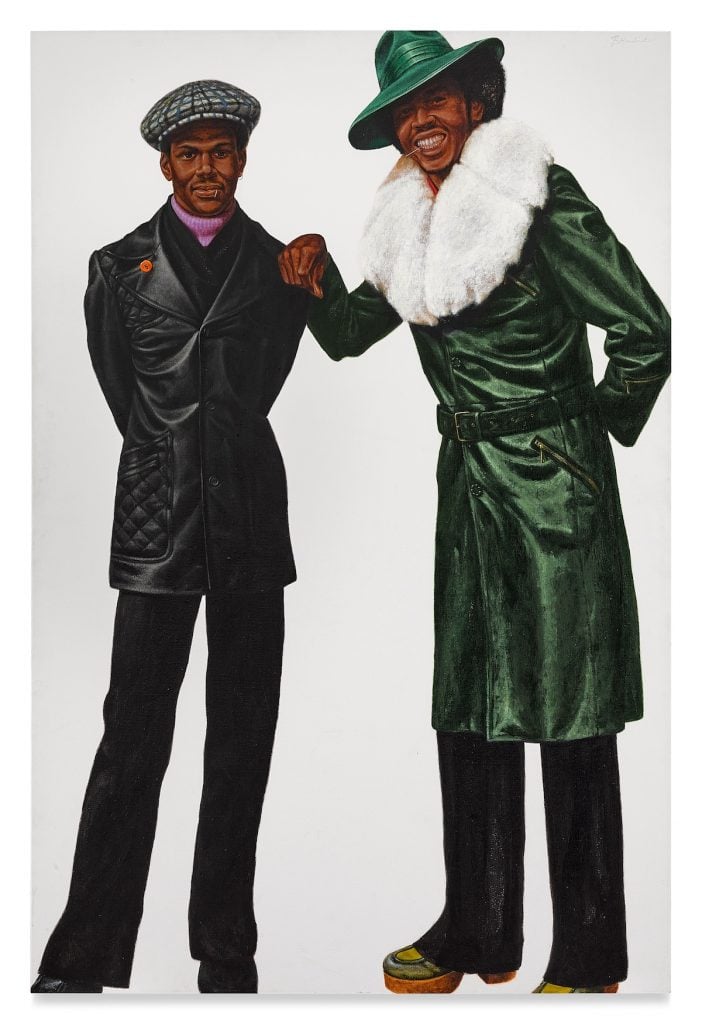
Barkley L. Hendricks, Yocks (1975). Courtesy of Sotheby’s.
This fall, Yiqian emerged as a major seller, with whispers about the Long Museum’s financial troubles and uncertain plans. Liu has unloaded about $100 million worth of art in the past two months. Most were designated as “A Long Journey: A Selection From The Liu Yiqian and Wang Wei Collection.” But some—like Yocks by Barkley L. Hendricks ($8.7 million)—were sold anonymously, a move that raised a few eyebrows in the trade.
Back to Saville. Like the rest of Liu’s collection, Shift was guaranteed by Sotheby’s. Estimated at $9 million to $12 million, the lot carried an irrevocable bid, ensuring it would sell. Bidding started at $7 million and hammered for $9.2 million. After the fees, the final price was recorded as $10.9 million. The buyer was Lisa Dennison, Sotheby’s chairman of the Americas, wielding Paddle 8 on behalf of an anonymous client.
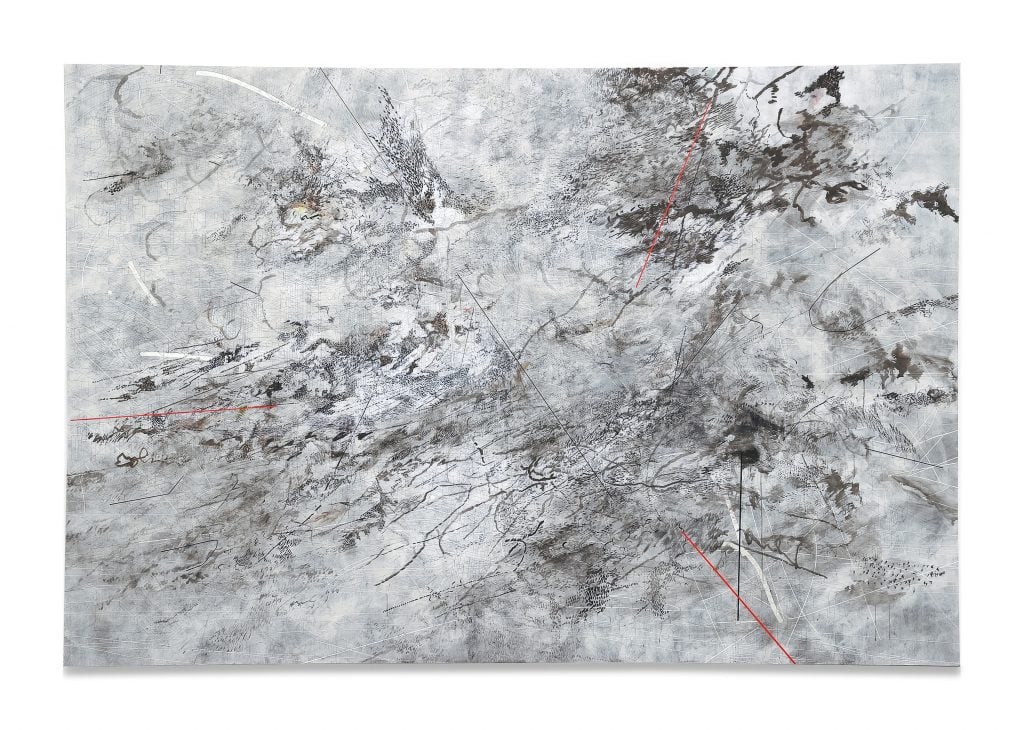
Julie Mehretu, Walkers With the Dawn and Morning (2008). Courtesy Sotheby’s.
Two lots later came Mehretu’s monumental 2008 abstraction, Walkers With the Dawn and Morning. Measuring almost 8 by 12, the painting is a tour de force of linework and calligraphy, intersected by red strips that activate the mostly grisaille composition. Created in the wake of Hurricane Katrina, it was exhibited at the original Prospect 1 New Orleans Biennial, as a celebration of black community’s survival and resilience.
The painting was consigned anonymously by mega-collector Michael Ovitz along with several other works. It was estimated at $7 million to $10 million. Bidding started at $5.5 million and progressed quickly to $9.5 million. As with Saville, the painting was guaranteed by Sotheby’s and backed with an irrevocable bid. And as with Saville, the winning bid came from the client represented by Dennison’s Paddle 8.
When the final results of “The Now” sale came in from Sotheby’s, Saville’s Shift was listed as the top lot, at $10.9 million, followed by Mehretu’s painting, at $10.7 million.
This seemed confusing. A painting that hammered at a lower number ($9.2 million) ended up with a higher final price than the work that hammered at a higher number ($9.5 million).
I went back to Sotheby’s to double check. A representative confirmed the pricing and clarified that Sotheby’s reports final prices as net of fees paid to third-party guarantors. On top of a regular Buyer’s Premium, Sotheby’s takes another 1 percent of the hammer price as its Overhead Premium. According to my calculations, after these additional fees added to the hammer price of $9.5 million, Mehretu’s Walkers With the Dawn and Morning should have totaled $11.25 million. Logically, it should have been the top lot of “The Now” auction, not Saville’s Shift.
Yet because Sotheby’s accounted for a $500,000 fee to the backer, the lot’s final price ended up being lower.
The same scenario would have yielded a different outcome at Christie’s and Phillips, which went back to reporting final prices as the Hammer Price plus Buyer’s Premium, following last year’s change in New York City Council’s auction industry regulations.
(For five years starting in 2017, the houses had to record prices net of fixed fees on guaranteed lots sold to the third-party guarantors; Sotheby’s remains the only one of the three still doing this.)
This whole situation made me wonder: Do we even care about the final prices? And why?
Mehretu’s result, net of fees, set a new record for an African-born artist and became a new personal auction high. The artist, of course, won’t see a penny from this transaction. This metric will mostly benefit the auction houses in their spin campaigns and future consignment wins. (Although auction records indirectly affect primary prices and demand.)
If anything, the incident is a sign of the further financialization of the art market. It underscores how little the public knows what’s really happening in these high-stakes, staged and heavily managed public extravaganzas, transmitted around the world.
I reached out to Belgian collector Alain Servais, an astute and often irreverent market observer and my go-to source for geeky deep-dives. “What is the final price?” Servais asked rhetorically. “There isn’t one.”
That’s because there are all kinds of invisible fees baked into these prices that get split between the auction houses, consignors, buyers, and backers depending on a myriad of factors.
You may recall how art dealer Leo Koenig backed Gerhard Richter’s 36-foot-wide painting Strip at $1 million, half the low estimate. He didn’t get any fee for this lowball bid.
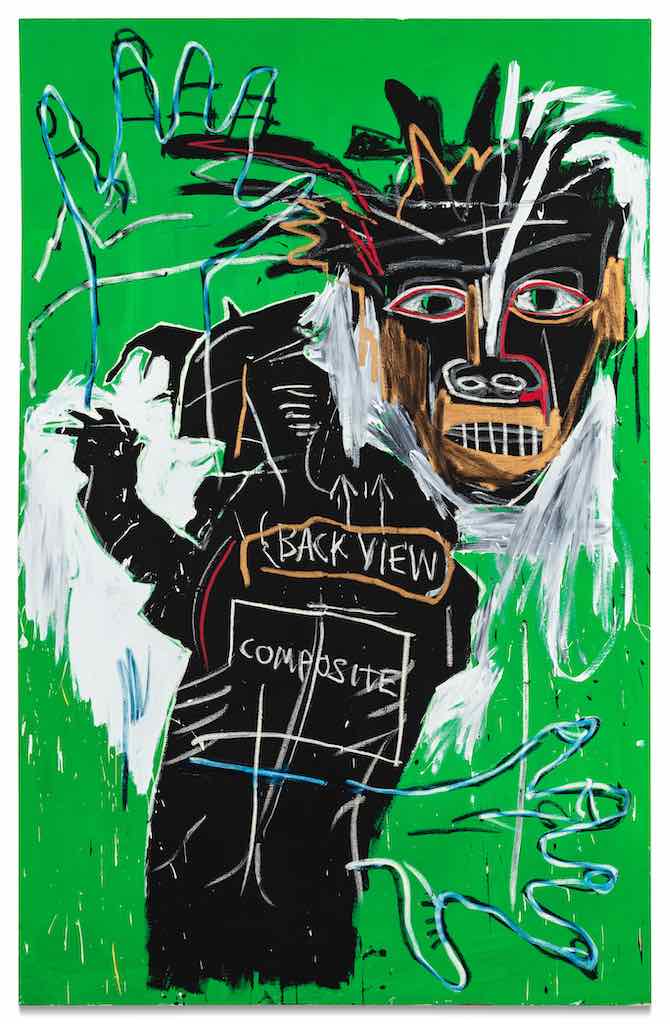
Jean-Michel Basquiat, Self-Portrait as a Heel (Part Two) (1982). Image courtesy Sotheby’s
On the other hand, the backer of Jean-Michel Basquiat’s cover lot Self-portrait as a Heel (Part Two) at Sotheby’s got a $3.1 million fee for offering a $39 million bid on the work that had been estimated at $40 million to $60 million. (The final price, inclusive to the Buyer’s Premium, should have been $45.1 million, but was reported at $42 million.)
These are just a couple of lots I spotted and deconstructed. I am sure there are countless others.
We tend to think about the auctions as a public stage, auction prices as monolithic markers, and guarantees as uniform deals. But dig a little, and you’ll feel the ground shifting under your feet. Nothing is what it seems.
“Everybody’s got different arrangements,” Servais said. “All is negotiable.”
